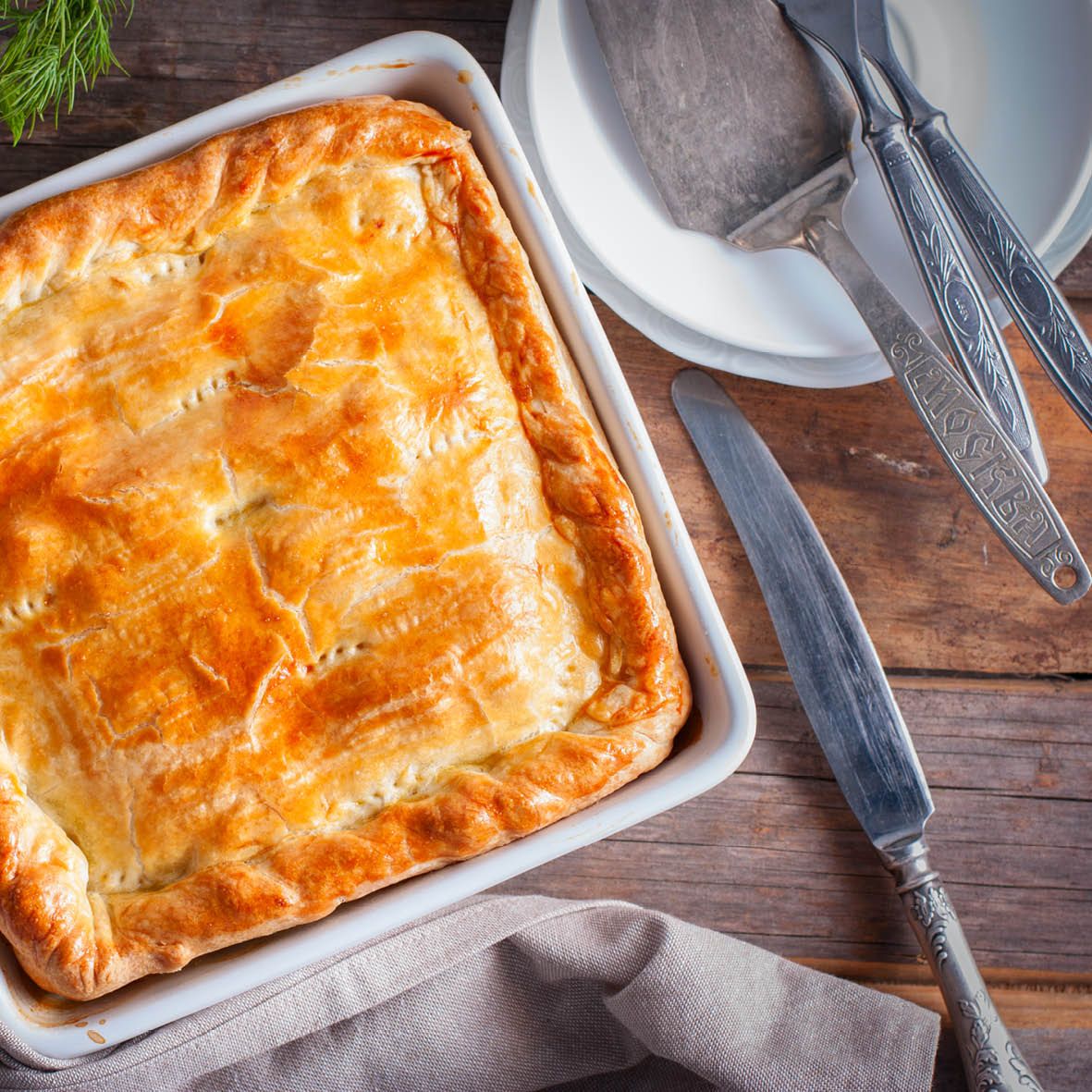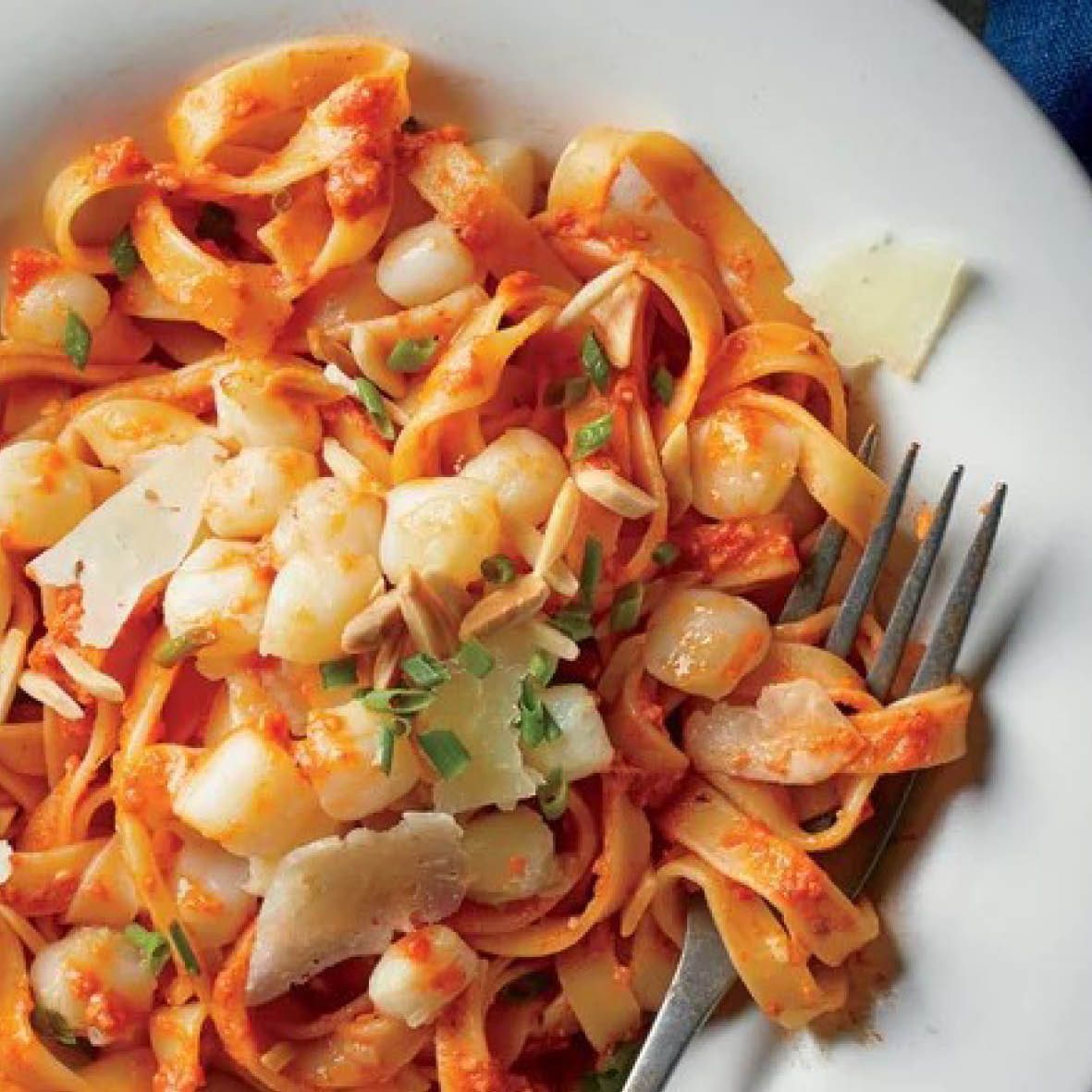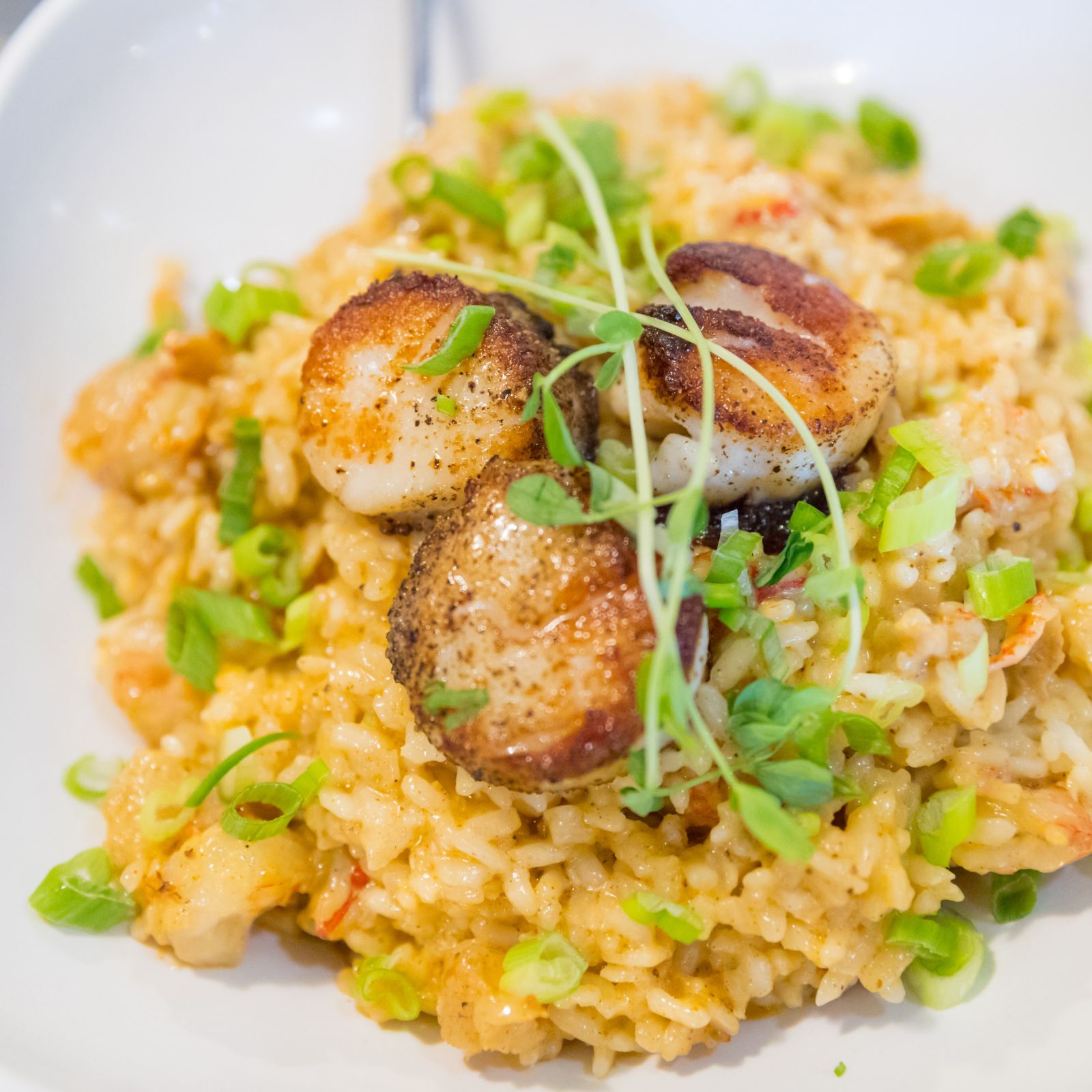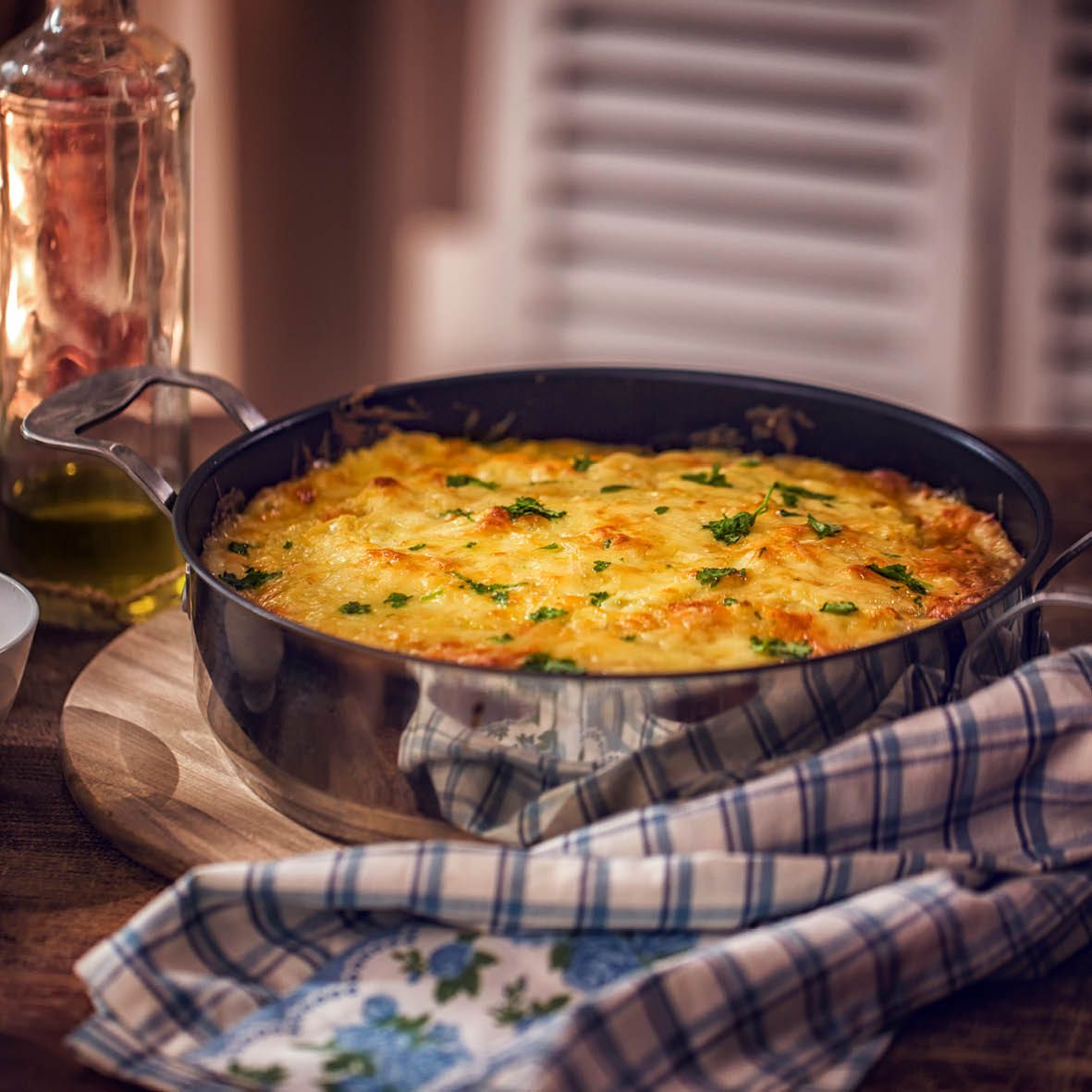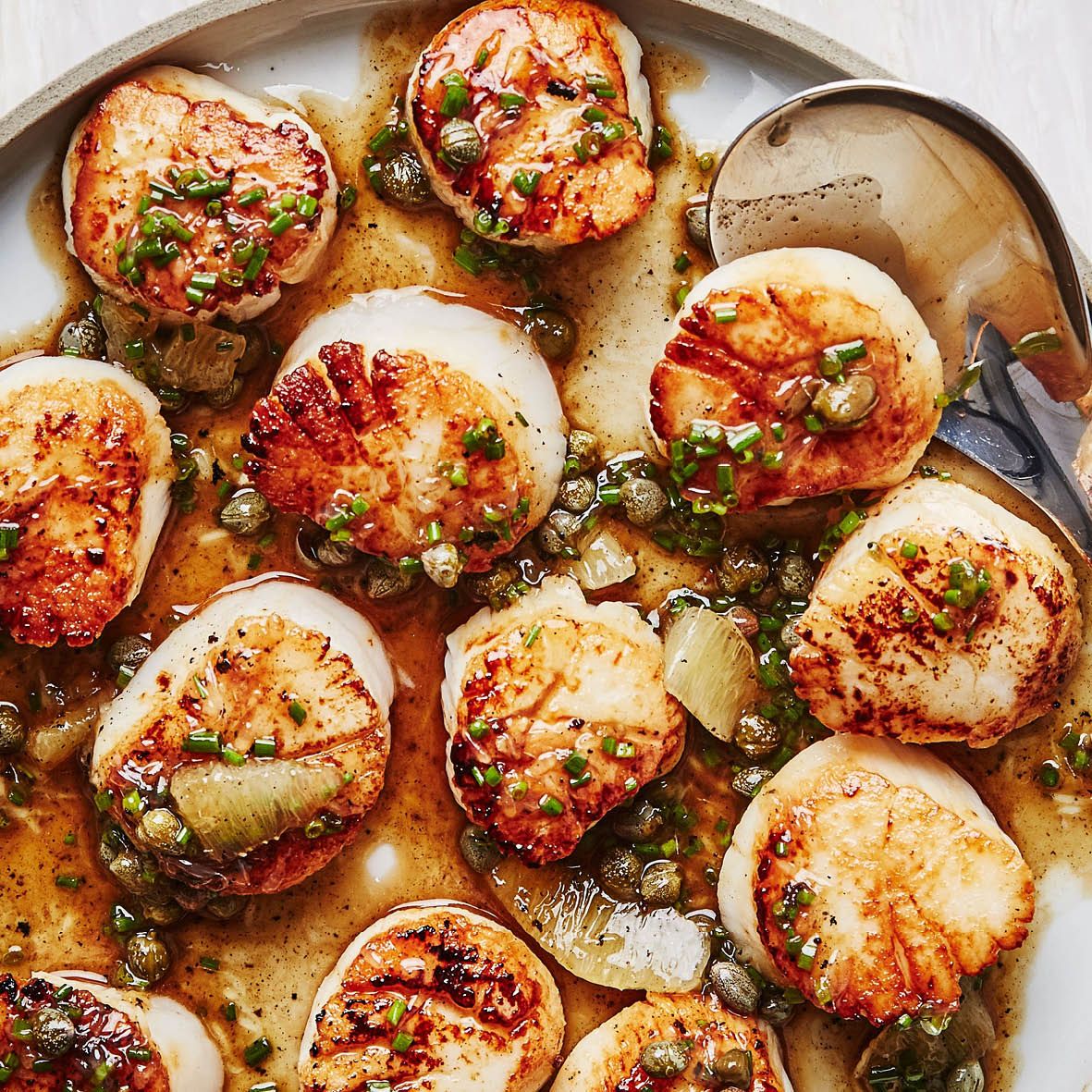The five & five of Tassie scallops

We’re blessed here in Tasmania by the bounty of the sea, and even more so during scallop season, which runs from early June to December. Read on to find out five things you need to know about Tassie scallops, and five delicious ways to eat them.
There’s something very Tasmanian about a feed of scallops. Whether you love them curried with rice, packed into a pie with a creamy bechamel, or lightly pan-seared with a squeeze of lime, Tasmanians just love them. You’ll see them on the menus at top restaurants and pubs alike, battered and deep-fried in fish-and-chip shops, and inside pies at most bakeries.
Five things you need to know about Tassie scallops:
1. Tasmania scallops, whose scientific name is Pecten fumatus, are bivalve molluscs native to Bass Strait and the East Coast and can be found as far south as Hobart and Bruny Island.
2. Our scallops come from Superfresh Seafoods at Bridport in the north-east of the state, which is run by Alanna Stanford and her husband Jacob, with Alanna following in the footsteps of her father, Allan, who founded the Allan Barnett Fishing Company in 1985.
3. Superfresh’s scallops are wild-caught east of King Island in Tasmanian state waters managed by the Department of Primary Industries, Parks, Water and Environment and hand shucked at Superfresh’s facility in Bridport.
4. If you ask for a ‘scallop’ at a takeaway shop in New South Wales or Victoria you will get a potato cake! A very disappointing experience for unsuspecting Tasmanians on the mainland.
5. Tassie scallops are renowned for their pearly sweet flesh and bright orange roe and are usually eaten in Tasmania with the roe attached. Some restaurant chefs on the mainland and overseas will cut off and discard the roe, as it has a briny flavour, different from the round, white abductor muscle of the scallop. Tasmanians would certainly feel short-changed to eat a scallop without its roe!
Five ways to enjoy scallops
Scallops go with garlic, butter, cream, crème fraiche, cheese, parsley, chives, thyme, tomatoes, celery, fennel, shallots, leeks, spinach, cream, pasta, risotto, salad leaves, vermouth, saffron, coriander, soy sauce, ginger, lemons, limes, white wine and tarragon.


